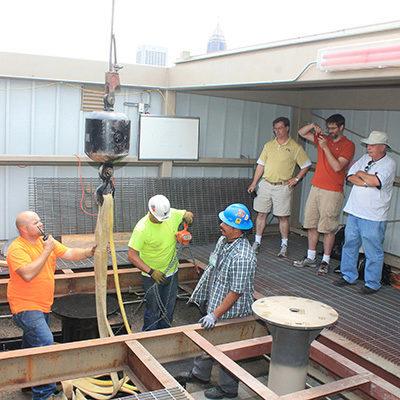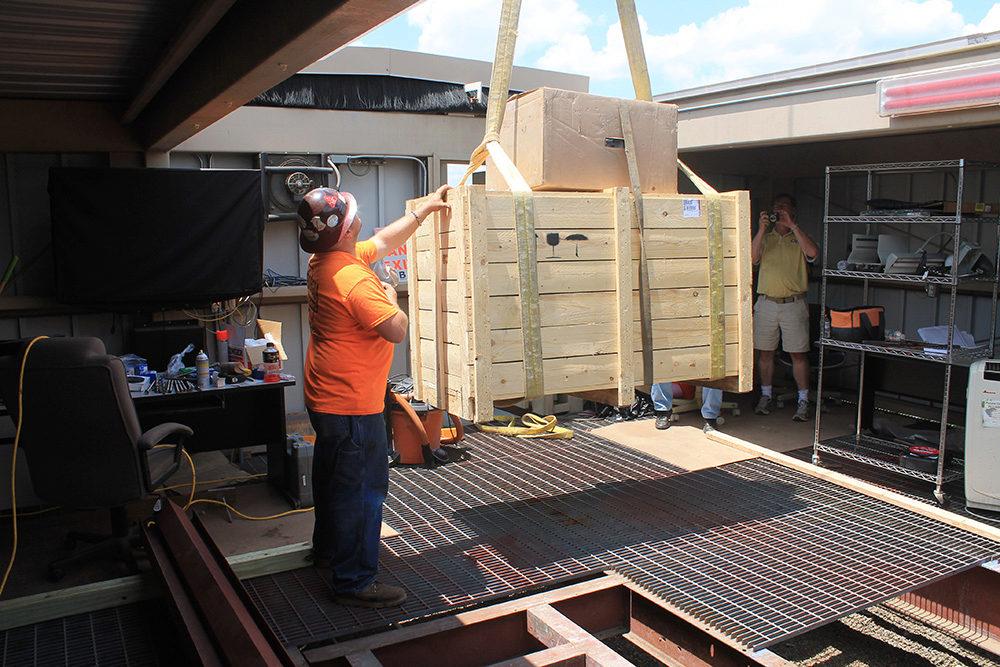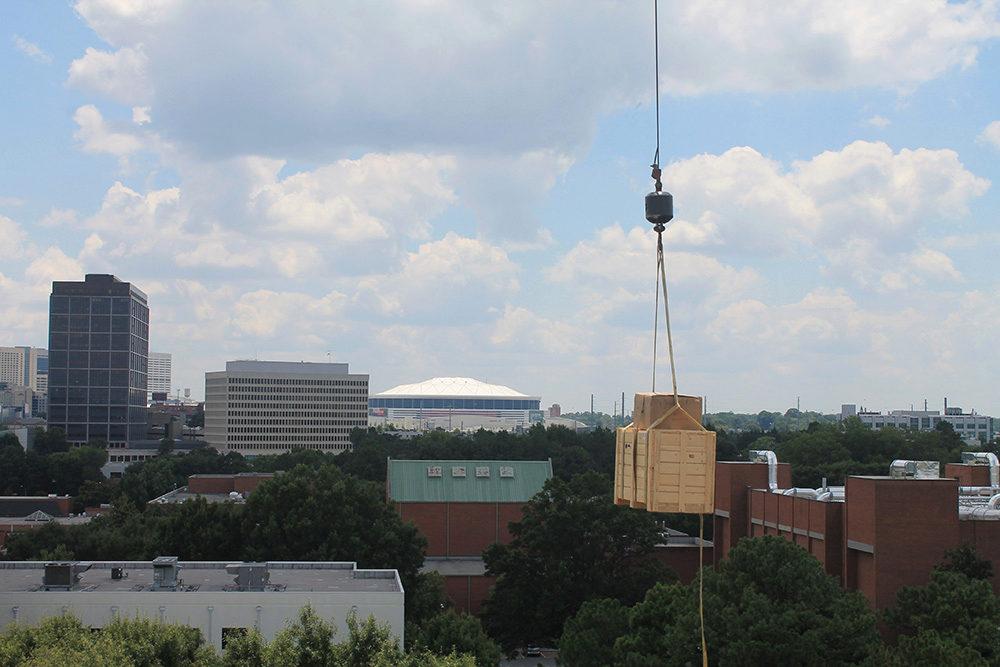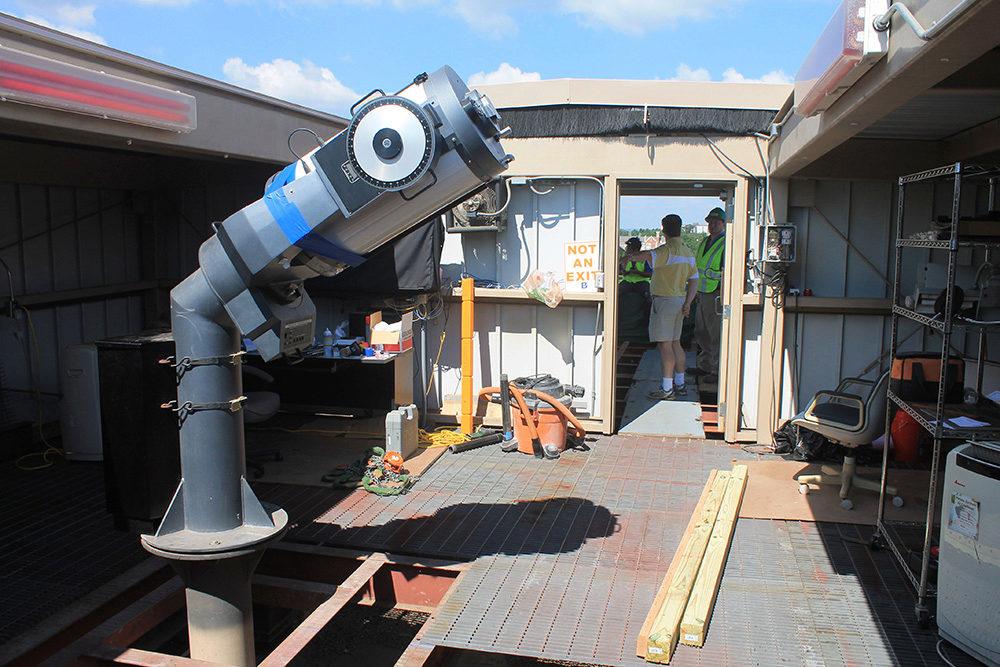
The July 29 installation of a new telescope at the GT Observatory represents more than the standard lab set-up for AE faculty Marcus Holzinger.
The $110,000 Space Object Research Telescope (GT-SORT) will give Georgia Tech researchers a unique and superior tool to study space situational awareness (SSA).
“GT-SORT will be one of the first Raven class telescopes at a US academic institution,” said Holzinger, who joined his colleague, James R. Sowell, a senior academic professional in the School of Physics, for the formal installation.
“There is another telescope of this quality at the US Air Force Academy, and a similar research telescope at Kyushu University in Japan, but none in domestic non-military academic institutions. I think some of my research colleagues across the country will want to follow suit in the next five years, but, for now, we have established a unique place for Georgia Tech’s research efforts.”
Cranes lifted the 2500-lb telescope assembly to its new home in The Georgia Tech Observatory, situated at the top of the Howey Physics Building. The installation caps a planning process that has engaged Holzinger and Sowell for 18 months.
For the time being, the GT-SORT will replace an older telescope which was used primarily for community-oriented activities (observing the moon, planets, stars etc.). The older one will be returned to the observatory and will be joined by yet another in the next 18 months.
For now, both Holzinger and Sowell are focused on the GT-SORT.
“It’s like going from a sedan to a sports car,” Sowell quipped. “The Observatory generally sees about 1,500 visitors a year, but, with this, I’d expect we’ll see at least 2,000, maybe more.”
In addition to a larger aperture, the GT-SORT has a superior optical assembly that features a large flat field, and substantial autonomous operation capabilities. The mount on which it will sit is also agile and accurate enough for Holzinger and his research team to collect empirical data on objects in low Earth orbit (LEO), an area crucial to his SSA research.
“GT-SORT will give us unprecedented access to sensors and data that can validate algorithms we develop to understand what is in orbit,” said Holzinger.
“Presently, what we do in academic environments is generate synthetic data using simulation. It’s an important step, but it’s only the first step in the proof of concept. I could write algorithms all day that appear on paper to detect and track debris, but they might not address real situations – possible debris that operators need to know about.”
Holzinger emphasized the importance of having verifiable data to enhance his work, and that of his colleagues in academia.
"Without empirical validation of space situational awareness methodologies, the utility and impact of any proposed approaches in academia remains unknown. How do we know if we're solving real problems? How do we know we're solving the right problems? How do we know if we've solved any problem? GT-SORT allows Georgia Tech to answer these questions directly."
Check out this slideshow of the telescope's installation.
This incredible view is from the door of the Georgia Tech Observatory, high atop the Howey (Physics) building.



